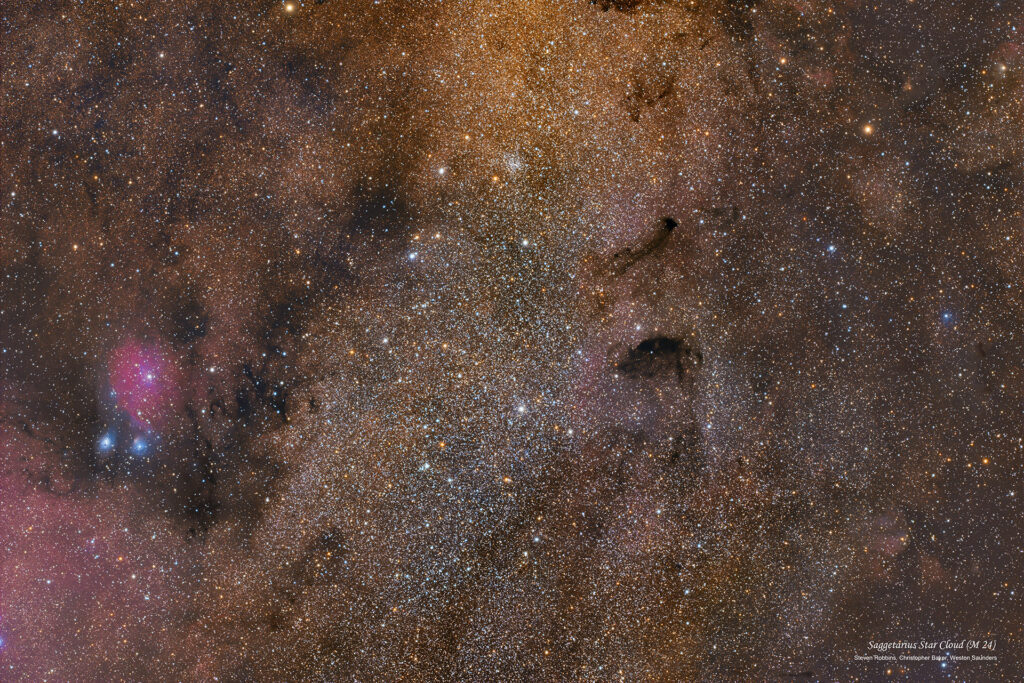Text and photo by Steve Robbins
This wide-band RGB capture of the Sagittarius Star Cloud (Messier 24) unveils a dense tapestry of stars and dust lanes stretching across more than 2° of sky. The image highlights the region’s natural colors and intricate structures.

What Makes M24 Unique
- It isn’t a single cluster but a “window” through the Great Rift, revealing a rich starfield about 10,000 ly away.
- Its high stellar density (over a thousand stars per square degree) contrasts sharply with dark nebulae like Barnard 92.
- Embedded within are dozens of open clusters, H II regions, and reflection nebulae, making it a playground for imagers and observers alike.
A Few Key Objects
- Barnard 92 A pinhole-like dark nebula, sometimes referred to as the Black Hole Nebula, silhouetted against the star field. It is located just right and down from the center. Its crisp edges carve a dramatic “void” roughly 20′ across.
- NGC 6603 A compact open cluster (mag 7.8 near the 12 o’clock position) resolves into dozens of stars down to ~12th magnitude. Subtle color variations reveal a mix of warm giants and bluish dwarfs.
- NGC 6590 & NGC 6589 Faint reflection/emission nebulae weaving through dusty lanes. Their redder hues in the RGB data hint at underlying H α emission.
- Sh2-43 An extended emission nebula near the cloud’s edge found just below the bright orange star in the upper right quadrant. Though muted in pure RGB, it outlines pockets of ionized hydrogen ready to burst in narrowband.
Imaging Details
| Telescope | Williams Optics FLT-91 mm f/5.9 refractor |
| Camera | ZWO ASI2600MM Pro (–15 °C) |
| Mount | Astro Physics 1100GTO |
| Total Integration | One hour each RGB |
| Calibration | Master darks, flats, and dark flats |
